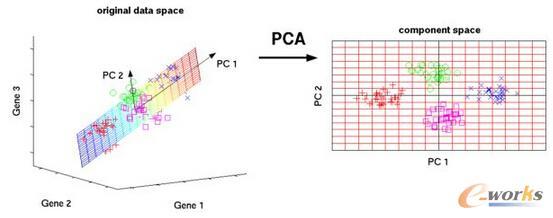Coronavirus disease 2019 (COVID-19) is the highly contagious illness caused by severe acute respiratory syndrome coronavirus 2 (SARS-CoV-2). The standard diagnostic testing procedure for COVID-19 is testing a nasopharyngeal swab for SARS-CoV-2 nucleic acid using a real-time polymerase chain reaction (PCR), which can take multiple days to provide a diagnosis. Another widespread form of testing is rapid antigen testing, which has a low sensitivity compared to PCR, but is favored for its quick diagnosis time of usually 15-30 minutes. Patients who test positive for COVID-19 demonstrate diffuse alveolar damage in 87% of cases. Machine learning has proven to have advantages in image classification problems with radiology. In this work, we introduce CovXR as a machine learning model designed to detect COVID-19 pneumonia in chest X-rays (CXR). CovXR is a convolutional neural network (CNN) trained on over 4,300 chest X-rays. The performance of the model is measured through accuracy, F1 score, sensitivity, and specificity. The model achieves an accuracy of 95.5% and an F1 score of 0.954. The sensitivity is 93.5% and specificity is 97.5%. With accuracy above 95% and F1 score above 0.95, CovXR is highly accurate in predicting COVID-19 pneumonia on CXRs. The model achieves better accuracy than prior work and uses a unique approach to identify COVID-19 pneumonia. CovXR is highly accurate in identifying COVID-19 on CXRs of patients with a PCR confirmed positive diagnosis and provides much faster results than PCR tests.
翻译:2019年科罗纳病毒(COVID-19)是严重急性呼吸系统综合症冠状病毒2(SARS-COV-2)2(SARS-COV-2)造成的高度传染性疾病。COVID-19的标准诊断测试程序是使用实时聚合酶链反应(PCR)测试SARS-COV-2核糖酸的鼻腔螺网,这可能需要多天才能提供诊断。另一种广泛的测试形式是快速抗原测试,与PCR相比,敏感度较低,但有利于其快速诊断时间通常为15-30分钟。CVI-19测试阳性病人在87%的病例中表现出松散性肾脏损伤。机器学习证明在图像分类问题方面很有优势。在这项工作中,我们引入了CovXR作为机器学习模型,设计用来检测胸部X射线(CXR)中多为COVI-19的肺炎。CVR是经过4300以上胸X射线快速诊断时间的NNN。通过精确度、F1-X的肝脏测量结果和精确度的精确度的精确度、F1-CR5的精确度、精确度5的精确度和精确度,在95%CR的精确度上实现了的精确度上,可以达到95的精确度的精确度和精确度的精确度。




